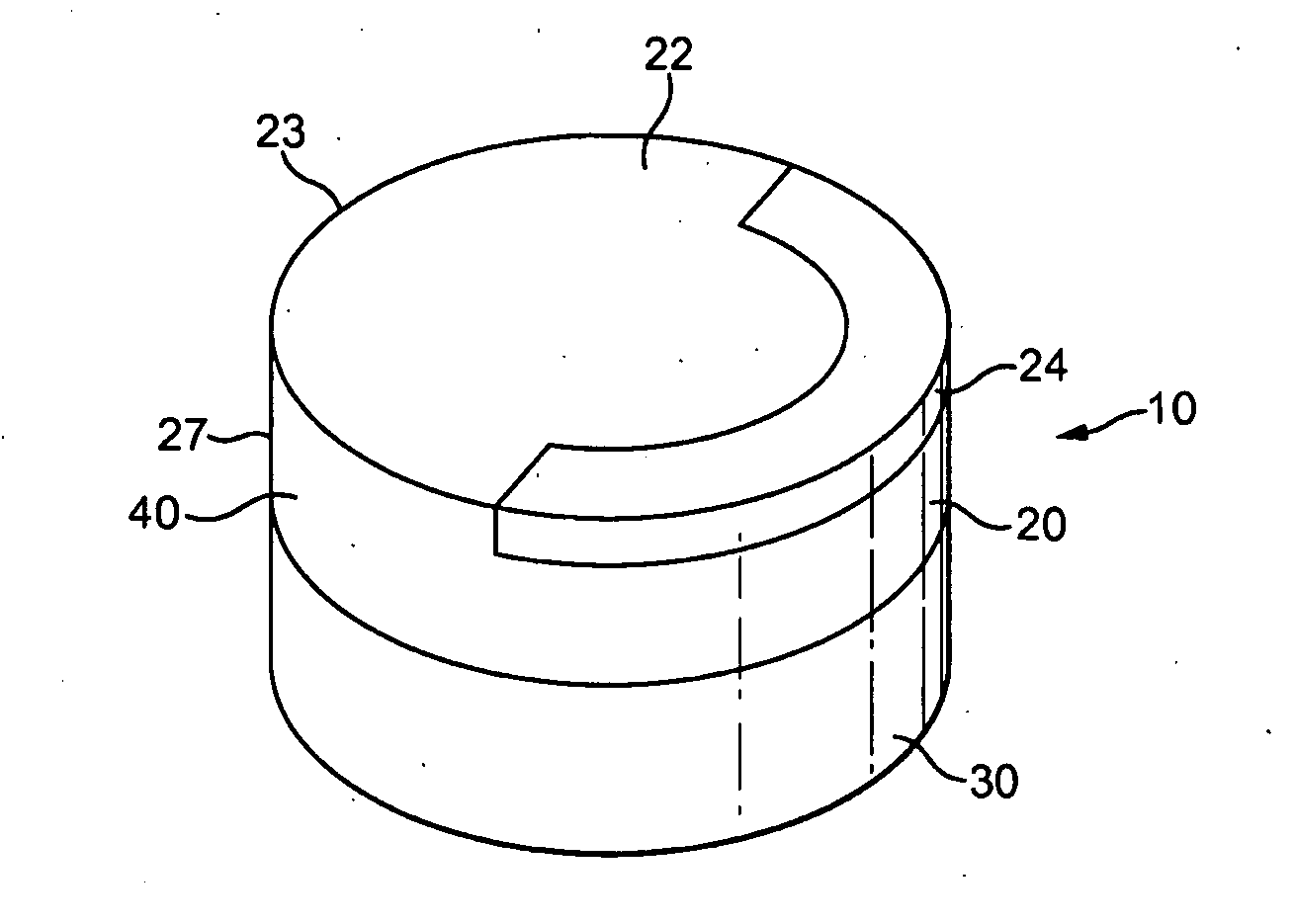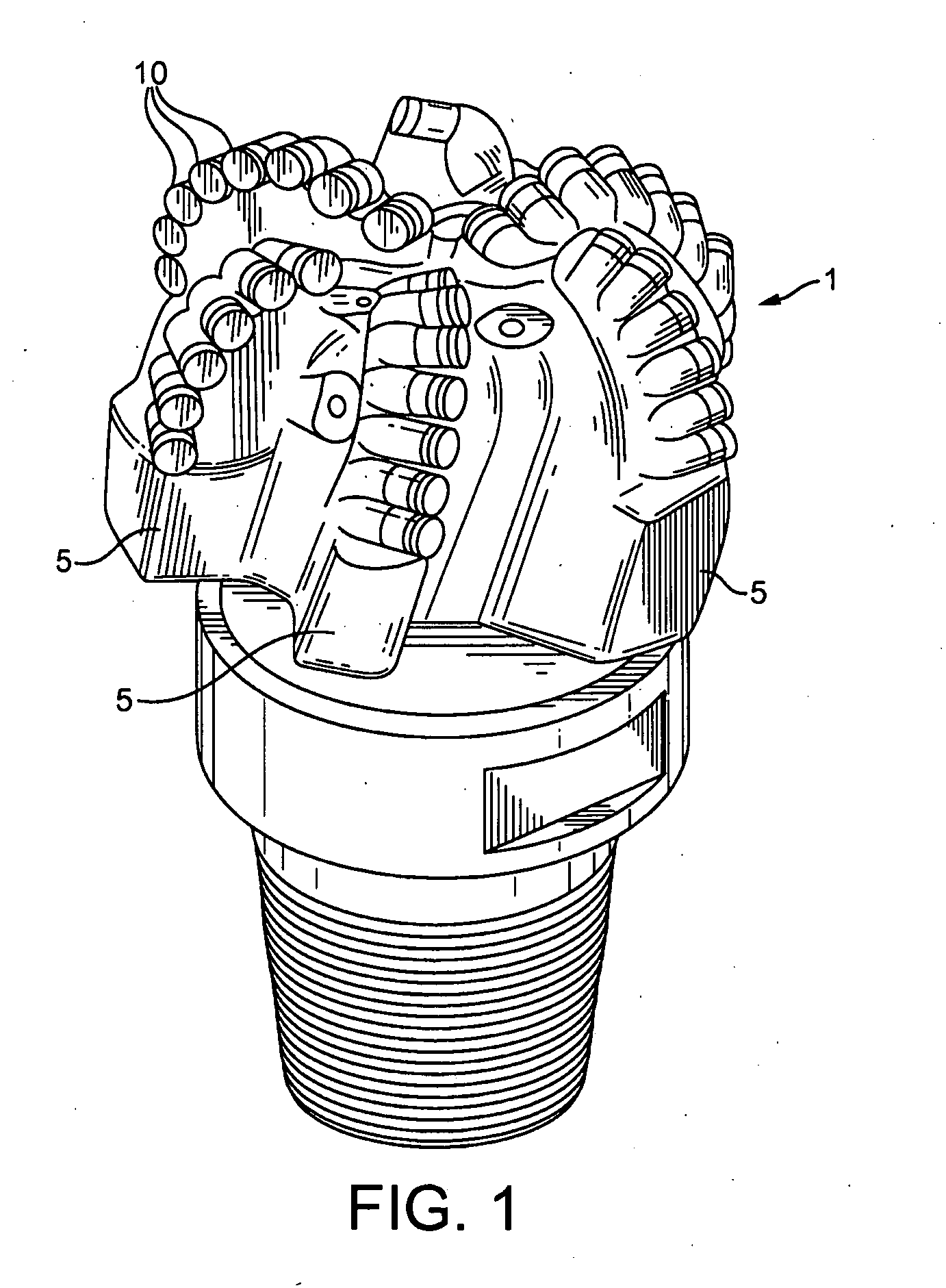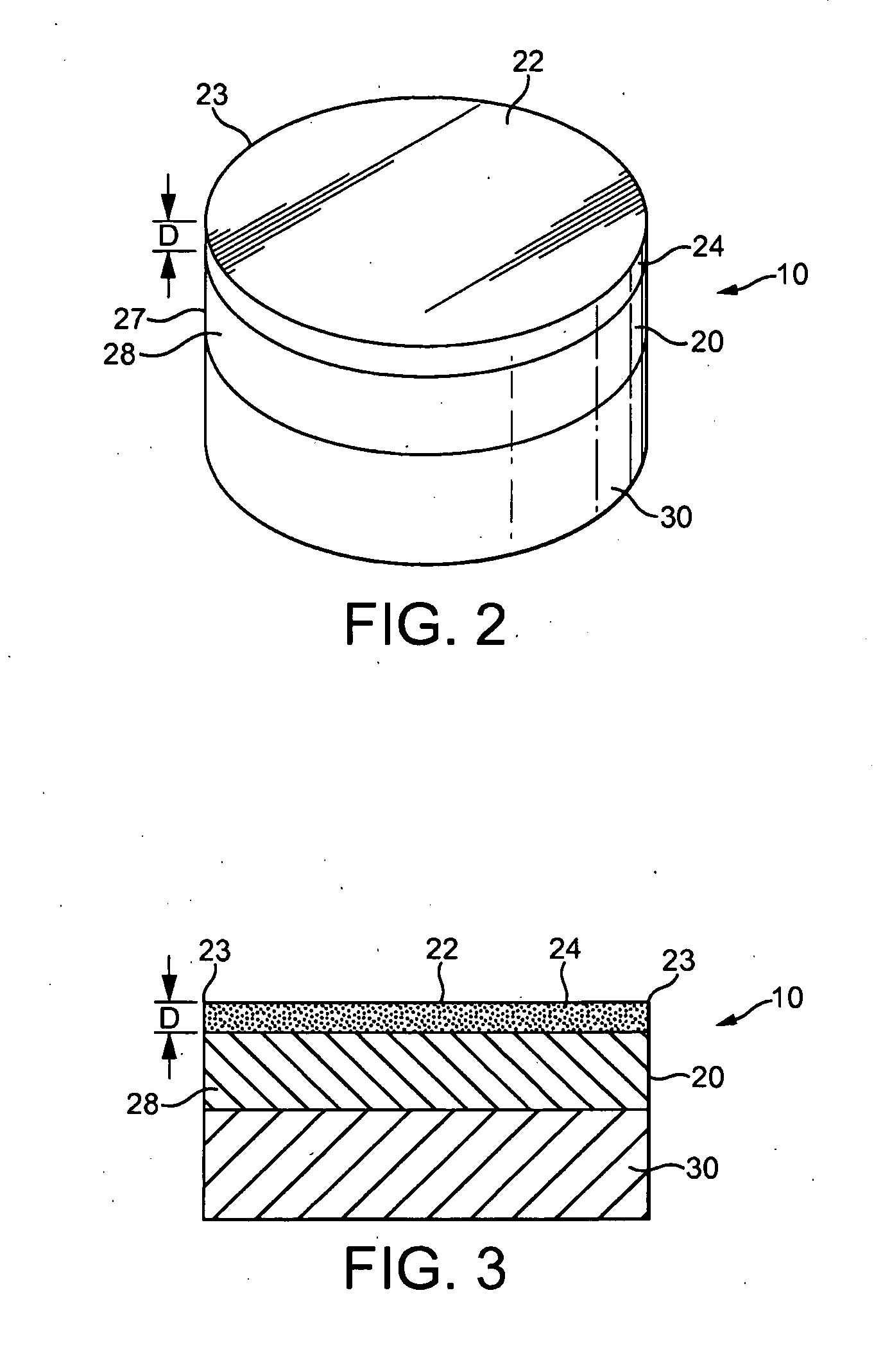Selectively Leached Cutter
a cutting element and selective technology, applied in the field of polycrystalline diamond cutting elements, can solve the problems of imposing a limit on the maximum useful operating temperature of the element, assembly is subjected to very high temperature and pressure, and pcd elements may be subject to thermal degradation, so as to achieve the effect of reducing the leaching depth
- Summary
- Abstract
- Description
- Claims
- Application Information
AI Technical Summary
Benefits of technology
Problems solved by technology
Method used
Image
Examples
Embodiment Construction
[0109]Before referring specifically to the drawings, some general characteristics of PCD elements and PCD cutting elements (also called polycrystalline diamond cutters, or PDCs) should be noted.
[0110]Polycrystalline diamond and polycrystalline diamond-like elements are collectively called PCD elements for the purposes of this specification. These elements are formed with a binder-catalyzing material in a high-temperature, high-pressure (HTHP) process. The PCD element has a plurality of partially bonded diamond or diamond-like crystals forming a continuous diamond matrix table or body. It is the binder-catalyzing material that allows the intercrystalline bonds to be formed between adjacent diamond crystals at the relatively low pressures and temperatures obtainable in a press suitable for commercial production.
[0111]The diamond matrix body may have a diamond volume density greater than 85%. During the process, interstices among the diamond crystals form into a continuous interstitial...
PUM
| Property | Measurement | Unit |
|---|---|---|
| depth | aaaaa | aaaaa |
| depth | aaaaa | aaaaa |
| depth | aaaaa | aaaaa |
Abstract
Description
Claims
Application Information
 Login to View More
Login to View More - R&D
- Intellectual Property
- Life Sciences
- Materials
- Tech Scout
- Unparalleled Data Quality
- Higher Quality Content
- 60% Fewer Hallucinations
Browse by: Latest US Patents, China's latest patents, Technical Efficacy Thesaurus, Application Domain, Technology Topic, Popular Technical Reports.
© 2025 PatSnap. All rights reserved.Legal|Privacy policy|Modern Slavery Act Transparency Statement|Sitemap|About US| Contact US: help@patsnap.com



